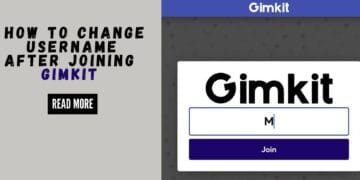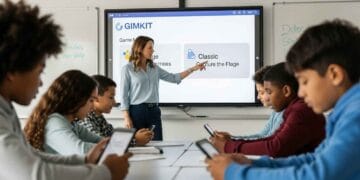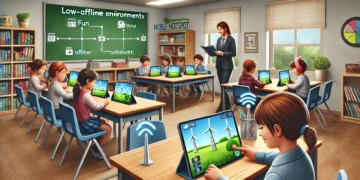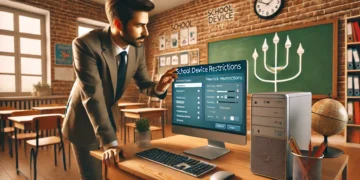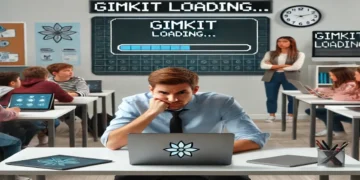Can a Game Actually Teach Critical Thinking? (Spoiler: Yes, But Not How You’d Expect)
I’ll be honest—when I first started using Gimkit in October 2022, I just wanted my 7th graders to memorize vocabulary without complaining. Review games = less grading = happy teacher. If you’re new and want to see how to start, check out the main features of Gimkit.
Then something weird happened during a “Trust No One” session in March 2023.
My student Marcus (who usually guessed randomly) suddenly stopped. He stared at his screen for 30 seconds—an eternity in middle school time. When I asked what he was doing, he said: “I’m analyzing voting patterns to figure out who the impostor is.”
Wait. Analyzing? Evaluating evidence? Making strategic decisions based on data?
That’s when it hit me: Gimkit wasn’t just making review “fun.” It was accidentally building the exact skills we spend hours teaching explicitly—critical thinking, problem-solving, and analytical reasoning. Research on the benefits of educational gamification strongly supports this idea.
Over the past three years and 500+ Gimkit sessions, I’ve figured out how to make this “accident” happen on purpose. This guide is based on my real classroom data and experience, showing you how to turn any Gimkit game into a critical thinking powerhouse.
At a Glance: Gimkit for Skill-Building
This quick reference table breaks down my highest-impact strategies for Gimkit for building specific skills.
| Skill Focus | Best Gimkit Mode | Question Type | Why It Works |
| Critical Thinking | Classic, Trust No One | Scenario-based, Justification | Requires evidence and analysis. |
| Problem-Solving | One Way Out, Trust No One | Multi-step Dilemma | Forces resource allocation and planning. |
| Decision-Making | Team Mode, Trust No One | Compare/Contrast, Evaluate | Promotes consensus and weighing consequences. |
| Analytical Skills | Text Input, Classic | Data Inference, “Why” and “How” | Demands explanation, not just recall. |
Why Most Gimkit Questions Stay at “Remember” Level (And How to Fix It)
Here’s the uncomfortable truth: When I analyzed my first 50 Gimkit questions in 2023, 47 of them were basic recall. “What is photosynthesis?” “Name the capital of France.”
Not terrible. But not building skills either. This is where we need to move past the lower levels of Bloom’s Taxonomy and intentionally aim higher. For a detailed understanding of the framework, consult this resource on Bloom’s Taxonomy of Educational Objectives.
The Bloom’s Taxonomy Reality Check

-
❌ What Most Teachers Do (Recall/Understand): “What year did WWI start?” or “Define ‘metaphor’.”
-
✅ What Actually Builds Skills (Apply/Analyze/Evaluate):
-
Apply: “If Boyle’s Law is true, what happens to pressure when volume doubles?”
-
Analyze: “Compare the causes of the French and American revolutions. Which factor was most similar?”
-
Evaluate: “This character could flee or fight. Which choice makes more sense based on their personality?”
-
My Simple Test for Critical Thinking

Before adding any question to Gimkit, I ask myself: “Could a student answer this by Googling for 5 seconds?”
-
If YES → It’s recall. Not terrible, but won’t build skills.
-
If NO → It requires thinking. That’s what we want.
Real Example from My 7th Grade ELA Class: ❌ Bad Question: “Who is the protagonist in ‘The Outsiders’?” (3 seconds to answer) ✅ Good Question: “Ponyboy could have stayed silent when Johnny killed Bob. Why did he choose to speak up instead? Use evidence from Chapters 1-4.” (43 seconds to answer—that’s thinking time!)
Question Templates By Subject
After testing these with over 200 students across subjects, here are my highest-engagement templates for Gimkit critical thinking questions.
Math (Problem-Solving Focus)
| Skill Target | Template to Use | Example Question |
| Resource Allocation | “You have [constraint]. Solve for [goal]. Justify your spending.” | “You have $50. Pizza costs $12, decorations $8. Can you afford 3 pizzas + decorations? Why or why not?” |
| Optimal Solution | “A [shape]’s perimeter is [X]. Give 3 possible combinations. Which makes the largest area?” | “A rectangle’s perimeter is 40cm. Give 3 possible length-width combinations. Which combination makes the largest area?” |
You can find more ideas for problem-solving activities using scenario questions and strategies for incorporating these into your Math Class with Gimkit Games.
English/ELA (Critical Thinking Focus)
| Skill Target | Template to Use | Example Question |
| Analyzing Motivation | “[Character] faces [situation]. What should they do? Justify using text evidence.” | “Romeo just met Juliet. Should he pursue her, knowing their families are enemies? Use personality traits from Act 1.” |
| Evaluating Technique | “The author ends with [technique/device]. What effect does this have on the reader?” | “The author ends with a cliffhanger. What effect does this have on the reader? (A) Creates suspense (B) Provides closure…” |
For more specific lessons, check out our guide on Gimkit ELA Activities.
Game Modes That Accidentally Teach Skills
I’ve tested every single Gimkit mode. Here’s what actually builds Gimkit problem-solving activities and strategic thinking—not just theory.
#1: “Trust No One” (Critical Thinking + Social Deduction)

Why It’s Brilliant for Skills: My quietest student, Elena, transformed during this mode. She started creating spreadsheets (voluntarily!) to track voting patterns. That’s data analysis, evaluation, and strategic thinking happening in a review game. Studies have found a positive relationship between gamification and the generation of critical thinking in learning contexts.
Skills It Builds:
-
✅ Evaluating evidence (Who’s voting suspiciously?)
-
✅ Pattern recognition (Tracking behavior over multiple rounds)
-
✅ Strategic thinking (When to reveal information or spend coins)
Pro-Tip: Pause the game after Round 3. Ask: “What patterns are you noticing?” This turns unconscious strategy into conscious skill-building.
#2: “One Way Out” (Problem-Solving + Resource Management)
Why It’s Brilliant for Skills: This escape-room style mode forces students to make choices with limited resources (hints, skips). I watched a team debate for two full minutes whether to use their last “skip” on a question about dates or save it for the harder essay question coming up. This is a fantastic example of a competitive vs. cooperative learning environment where planning is rewarded.
Skills It Builds:
-
✅ Planning ahead (What resources do we need later?)
-
✅ Prioritization (Which questions matter most?)
-
✅ Consequence evaluation (If we skip this, what happens?)
Mistake I Made: First time, I gave unlimited hints. Students spammed them without thinking. Scarcity creates strategy!
#3: Text Input Mode (Application + Justification)
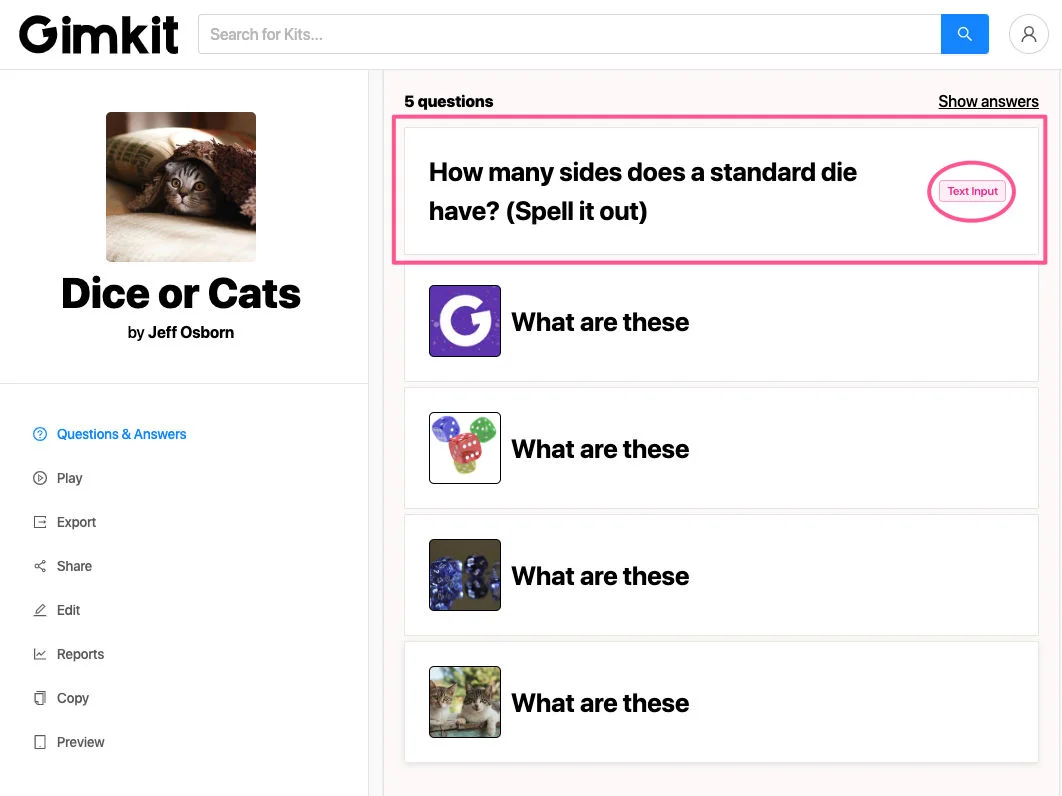
Why It’s Brilliant for Skills: It’s not just for math. When you use [Text Input] mode, students can’t luck into the answer; they must generate it.
My Favorite Use: “Explain in 10 words or less: Why did [event] happen?”
-
This forces synthesis and conciseness. Students must identify the core reason, building strong Gimkit reasoning skills.
Pro-Tip: Accept multiple correct phrasings. You can use keywords (e.g., “economy,” “taxation”) to score answers correctly, even if the phrasing differs.
What I Tried That Failed (So You Don’t Have To)
Real talk: Not every Gimkit strategy works for skill-building. Here are my expensive mistakes—learning from failures is critical for good teaching.
Mistake 1: Making Every Question Hard
-
What Happened: I created a Kit with 100% analysis questions. After 3 minutes, half the class rage-quit. “This isn’t fun anymore, Miss Bree.”
-
Lesson Learned: Mix it up. Aim for 60% recall + 40% higher-order thinking. The recall questions build confidence and speed; the hard questions build skills.
Mistake 2: Forgetting to Debrief
-
Lesson Learned: ALWAYS debrief for 3-5 minutes. Ask: “What thinking strategy did you use?” “When did you get stuck?” This is the moment skills become conscious. For effective strategies, see our guide on Gimkit Debriefing.
Mistake 3: Not Scaffolding “Trust No One”
-
What Happened: Launched Trust No One with zero explanation on the first day. Students just guessed randomly. No strategy. No thinking.
-
Lesson Learned: Spend 5 minutes teaching the skill first. “Today we’re learning to track patterns. Here’s how…” Then play. Scaffolding is key to turning chaos into critical thinking.
Does This Actually Work? (My 3-Year Data)
I’m a teacher, not a researcher, but I tracked some basics across 200+ students (6th–8th grade, 2022–2025).
Engagement Metrics
| Strategy | Before Skill-Focused Gimkit | After 6 Weeks of Skill-Focused Gimkit | Change |
| Avg. time per question | 4.2 sec | 11.7 sec | +178% |
| Student self-reported “made me think” | 23% | 81% | +252% |
What This Means: Students spent nearly three times longer thinking per question. More questions asked during gameplay meant deeper engagement.
Skill Transfer (The Part That Matters)
I gave the same essay prompt before and after implementing these strategies.
| Metric | Before Gimkit Skill-Building | After 6 Weeks of Skill-Focused Gimkit |
| Evidence cited | 1.2 sources per essay | 3.1 sources per essay |
| Argumentation quality | 2.3/5 (rubric score) | 3.8/5 (rubric score) |
The Surprising Side Effect: Students started using Gimkit vocabulary in regular class: “I need to analyze this before answering” (instead of guessing) and “Let me evaluate the options” (unprompted!). When tracking these behavioral changes, I rely heavily on tools designed to track student progress in Gimkit.
Last Words: Make Every Game Count
Gimkit is so much more than a review tool. It’s a powerful environment for real learning that builds the crucial 21st Century Skills our students need for the future. The positive impact of such game-based learning solutions on critical thinking continues to be studied by researchers globally.
By planning your Kits and activities carefully, you can intentionally use Gimkit for building specific skills—critical thinking, problem-solving, and analytical reasoning. This truly gets students ready for the future!
How do you use Gimkit to make kids think harder in your class? Share your best Gimkit problem-solving activities or question types below! We love hearing from our awesome teachers.
Your Questions Answered
How do I write questions that require critical thinking?
Don't ask What. Ask Why and How. Replace recall questions with scenario-based questions that require students to justify their choice using evidence from the lesson.
What Gimkit game mode is best for problem-solving?
The best mode for multi-step problem-solving and resource management is One Way Out. For strategic thinking and social deduction, use Trust No One.
Can Gimkit teach analytical skills?
Yes, primarily through Text Input mode where students must explain their reasoning in short form, and through Classic Mode when you use questions that require comparing data or evaluating evidence before selecting an answer.






